Useful Knots
last updated 4 February 2025.
There are many different types of knots that you can use for antennas. To a large degree, it really doesn’t matter which ones you use, as long as you can tie them when needed.
Being able to untie a knot quickly and easily is also important.
Basically there are three general uses for knots in putting up antennas:
- tying two ropes / wires together (a “bend” in knot terms)
- making a loop
- tying a rope off to an object (a “hitch”)
If you know a simple knot of each type (along with how to wind a rope) that will handle most of your needs.
Rather than trying to explain how to tie these knots, I’ve linked to videos that are already available online, that will be much better than whatever I could put together. Note that some of the knots in my photos are not fully tightened: instead, I’ve tried to make them loose enough that readers can see how they are tied.
If you aren’t comfortable tying knots, check out the Alternatives to Knots article.
tying two ropes together
The knot I use the most for this is the sheet bend. It is very simple, works well (although it may come untied when there is no tension on it, depending on the ropes used) and unties easily as well. Sometimes I make it “slippery” so it is easier to untie (like common knots for shoe laces), or use a double sheet bend to make it more secure. Those are just matters of detail. Commonly the sheet bend is tied to a loop in one of the ropes or wires, but that isn’t necessary.
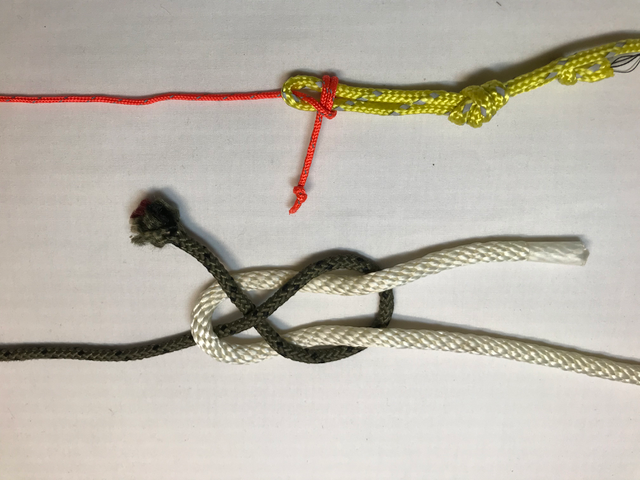
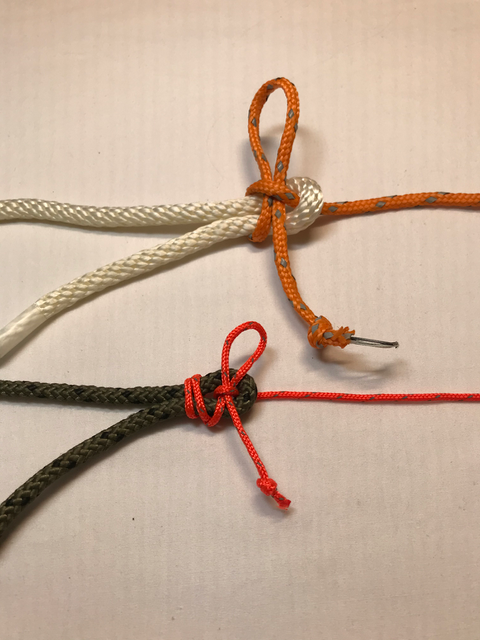
loop knots
I generally leave a loop tied in (or near) the ends of my antenna wires if I know that I will be attaching a rope at that point. Some of my ropes have permanent loops in the ends as well (even if I don’t always use them). That is a matter of personal preference as you get more accustomed to your ropes.
A simple overhand loop is quite adequate in most cases, although it can be difficult to untie when it has been under a lot of tension. I also use the bowline knot, and the figure-8 loop when strength or security is critical. The bowline can be tied “slippery” to make it easier to untie.
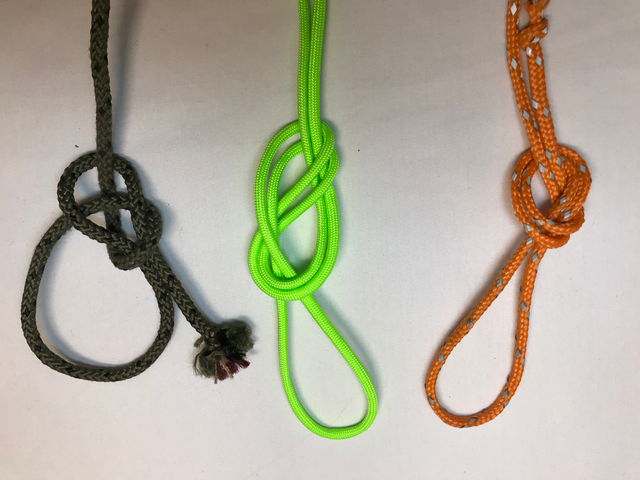
tying a rope to an object
This is most commonly tying off the ends of an antenna to a tree, fence post, etc. Often it requires adjusting the tension or length to get the antenna in the desired shape.
My almost universal knot for this is the taut-line hitch (which is a variant of the midshipman’s hitch). This knot permits the rope length to be adjusted without retying the knot. (The adjustable grip hitch is similar.) If I have a lot of extra rope, then I make a bight (fold the rope over itself) and use that as the end of the rope for the purpose of tying the knot.
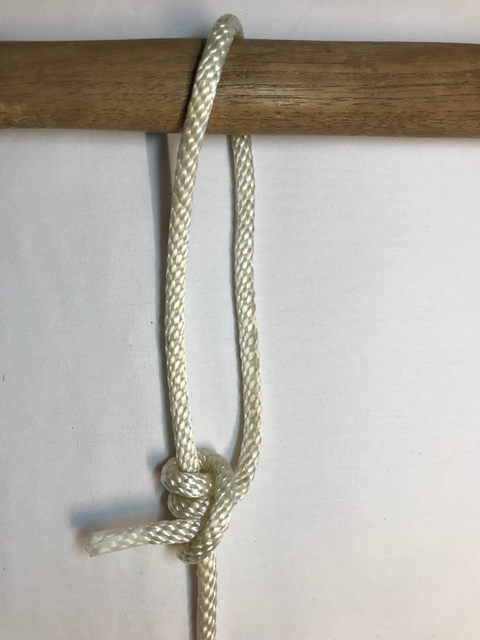
A similar approach is to use a small loop of rope to tie a prusik hitch around the rope, which also can be slid along the rope when there is no tension on it, then will tighten and hold when tension is applied. I also use the prusik hitch to attach an antenna to a telescoping fiberglass pole:
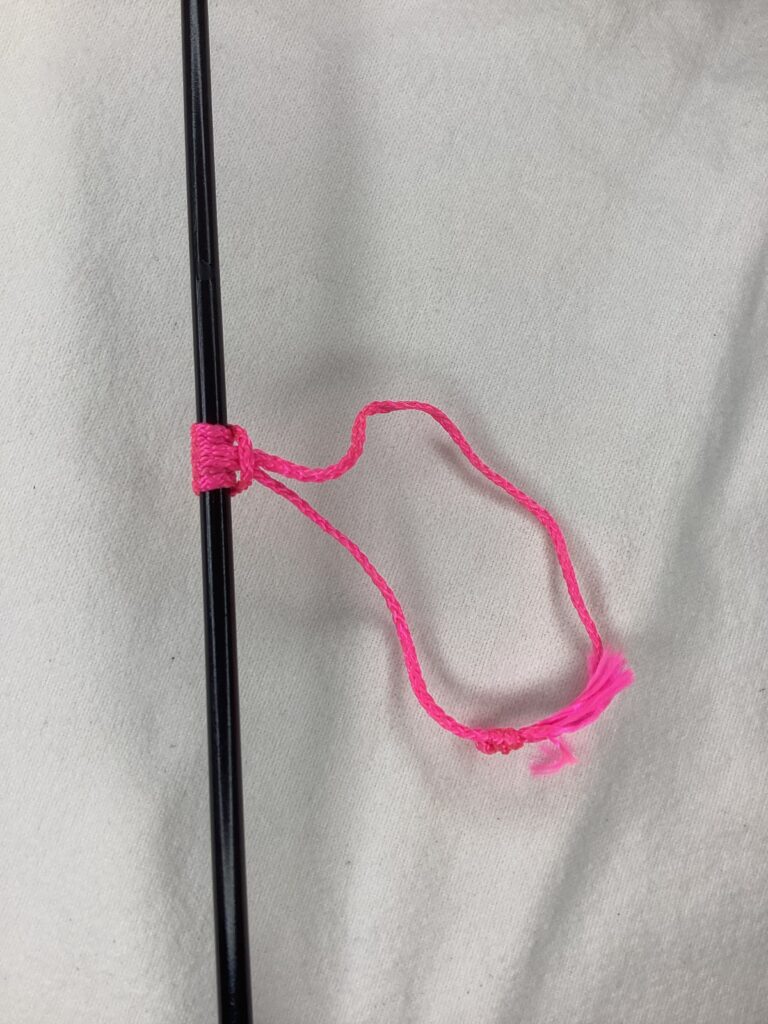
Sometimes for tying to a tree I will use a clove hitch or two half hitches if I don’t need it to be adjustable.
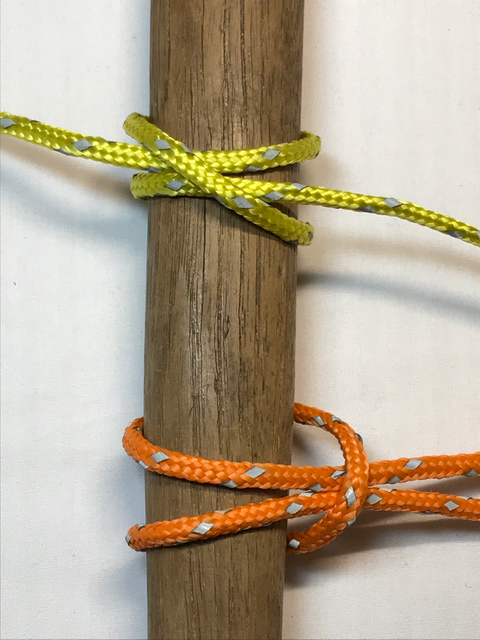
And sometimes just wrapping the rope a few times around a branch or the end of a stick holds well enough for a temporary installation, as seen in some of my videos.
BACK TO
simple construction of wire antennas